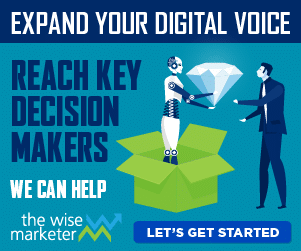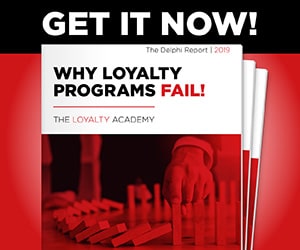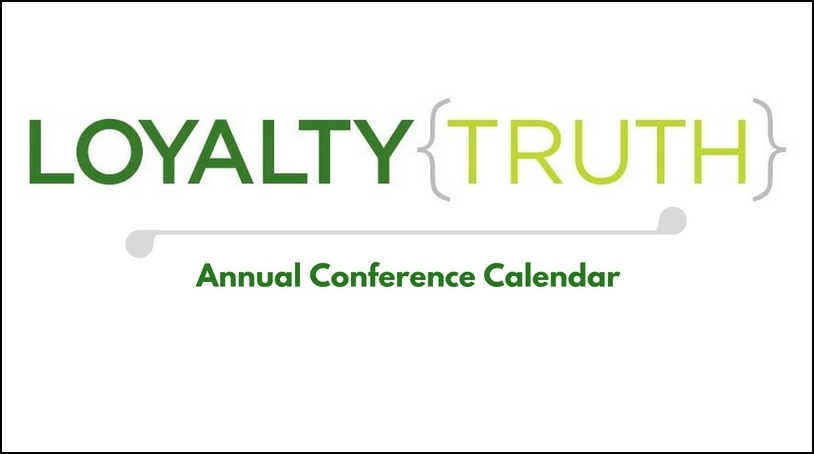Editor’s Note: Loyalty Truth likes to bring you insight on customer marketing from a variety of perspectives, not just our own. In this case, we are privileged to share exclusive content crafted by Keith Smith, Co-Founder and CEO, BigDoor.
BigDoor is a global leader in loyalty whose software platform helps the world’s biggest brands in retail, restaurant / dining, entertainment, travel / hospitality, telecommunications and publishing increase customer engagement, reward users and build sustained consumer relationships.
______________________________________________________________________________
Sustain Your Investment In Loyalty Programs from the First Customer Touch Point Onward
The fierce marketing debate continues – is it better to invest in loyalty programs when you’re trying to acquire customers, or does it make more sense to wait and spend on loyalty when retaining them is the goal?
So many marketers believe that loyalty efforts should kick in at the retention stage.
After all, it’s six-seven times more costly to attract a new customer than it is to retain an existing customer (White House Office of Consumer Affairs); the probability of selling to an existing customer is 60–70 percent, while the probability of selling to a new prospect is 5-20 percent (Marketing Metrics); and a 10 percent rise in customer retention yields a 30 percent increase in the value of the company (Bain & Company).
I believe that this represents a narrow and out-of-date way of thinking about loyalty.
Loyalty doesn’t happen organically.
You have to work at it.
And, by starting early, and sustaining your loyalty efforts, you’ll come closer – much closer – to your customers, which is a very good thing for business.
Put another way, companies that start loyalty programs later in the customer acquisition and retention process will deprive themselves of legions of committed customers who are willing to engage in deeper relationships that result in greater – and earlier – support of a brand’s products and services than we’ve previously acknowledged or seen.
That’s why my view is that visitors in the initial stages should be made into loyal visitors; then members should be made into loyal members; and, finally, customers should be made into loyal customers.
In other words, you need to seed loyalty every step of the way.
There are five main factors that are helping to make sustained loyalty programs – from the initial customer touch point onward – possible and successful today.
First is the rapidly diminishing sense that loyalty programs bribe and buy-off customers, just to get them to open their wallets and flash their credit cards. This stigma is receding, because an increasing number of loyalty options aren’t just purchase-based anymore. In fact, there is a growing comfort level with the notion of reciprocal, or two-way, loyalty between customers and companies.
Second, and more broadly speaking, consumer behavior has changed significantly throughout the funnel – from discovery to comparison to decision and evaluation. People are also mobile, and they live in a frictionless world, so loyalty needs to be fostered from the very first brand interaction.
Let me give you a few examples of what I mean.
In the past, at the discovery phase, we focused on informing and educating customers; now, we need to provide social proof of our loyalty to customers by providing up-front value in the form of, say, free resources or thought leadership. And we need to differentiate ourselves in the minds of customers through programs, stories or communities.
Previously, at the comparison phase, we emphasized selling; now, we need to reward customers for engagement – for example, by explaining what they get in the relationship beyond a mere product. Providing a multi-media experience, or personalized messages and communication, is absolutely reinforcing here.
Traditionally, at the decision phase, we stressed pricing triggers, or we leaned on fear-based selling that was infused with a sense of urgency; now, we need to help customers – especially Millennials – feel that our products and services are cool, unique and worth the investment. This is the moment when marketers today need to leverage word-of-mouth marketing; be transparent about the value of what they’re offering; and showcase the size of the communities they have built. It’s also the time to explain what else customers will get, whether it’s rewards or free resources, for example.
Before, at the evaluation phase, we zeroed in on surveys, sent email follow-ups from customer service reps, and maybe asked for reviews; now, we need to encourage customers to be advocates, and we must foster this advocacy through loyalty campaigns and programs.
I think it’s important to talk a bit more about word-of-mouth and referrals. This is the third factor that’s driving successful and sustained loyalty programs right now. The key point here is that customer retention and acquisition efforts can be mutually supportive – and even synergistic.
A study from Customer Thermometer, for example, showed that satisfied customers tell nine other people about their positive experience, while dissatisfied customers are likely to talk about their negative experience with 22 other people. Referrals have always been gold for brands, but in today’s quiksilver-fast digital economy, the value of word-of-mouth spreads much earlier and much more rapidly.
The fourth factor that makes sustained loyalty programs so effective today is the fact that non-dollar-backed currency rewards for consumers are becoming so ubiquitous. For years, CFO’s resisted loyalty programs, saying they were a cash drain on company coffers. With cost-effective non-dollar-backed currency, that’s no longer the case.
The final factor that facilitates sustained loyalty programs in 2014 is the ability to seamlessly identify prospects and customers – and know them – early on in the process, thanks to social tools and tactics like Facebook, customer journey maps, customer personas and search analytics like Google Analytics, all of which make anonymity much more a thing of the past.
Loyalty programs used to be primarily rolled out by airline and credit card companies. But today every customer-facing brand can – and should – start loyalty efforts from the first touch point. This is especially the case if a significant percentage of brand users are anonymous, or if getting repeat purchase is a specific problem; loyal customers will return to you over and over again if you’ve established deeper relationships with them from the beginning.
And that’s the key. Companies need to go deep, and go early, with customer loyalty programs in order to build better businesses that will prosper and grow over the long haul.




